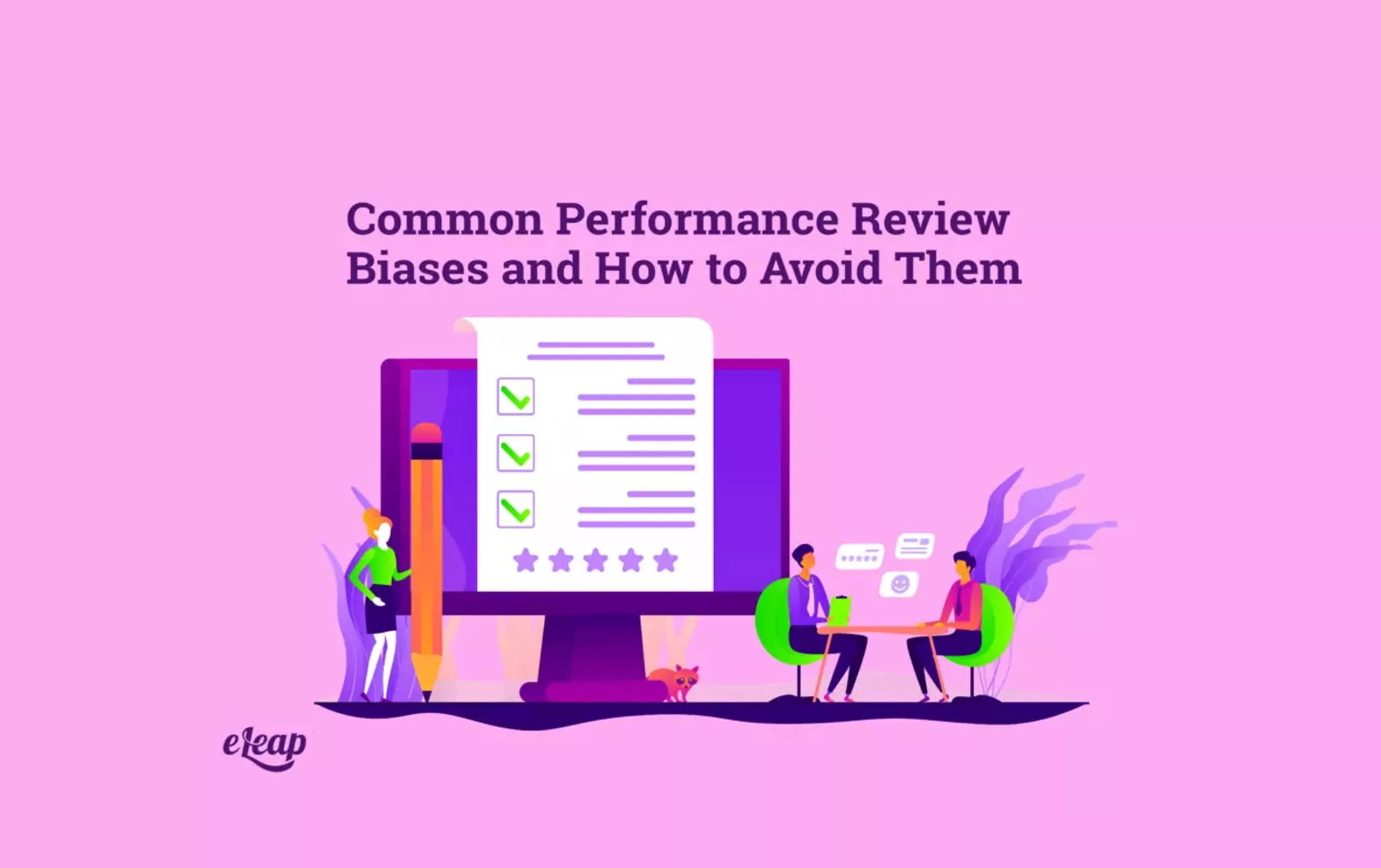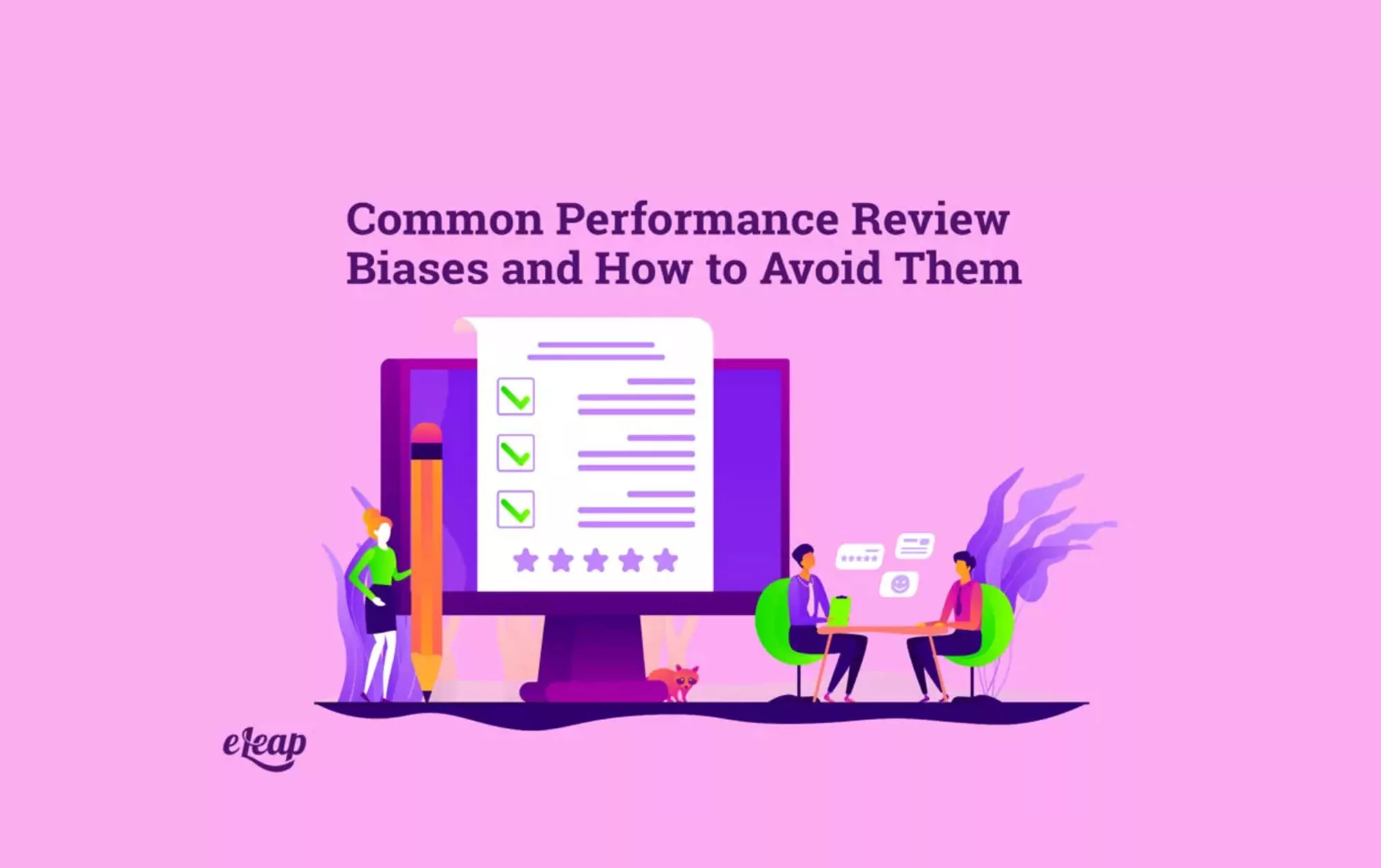Common Performance Review Biases and How to Avoid Them

Bias is a sensitive topic, one that many of us avoid talking about all together, and thus needs to be handled carefully. Hear the word bias, whether performance related or otherwise, and most people equate it with prejudice. What does this mean? It’s difficult for people to admit, or even comprehend, if and when they are being biased. But despite general avoidance of bias, it has long been known to psychologists that this phenomenon is a fundamental part of the human condition. Even though it doesn’t seem like bias can ever be a positive thing, we’re subject to it for a reason. Evolutionary psychology says that in order to avoid dangerous situations and create strong social bonds, our brains developed cognitive biases. People in the past would have been more likely to get along if they gravitated towards people who were more like themselves.
Of course, these days, bias doesn’t really serve us well in our everyday lives. Even though cognitive biases are still something we’re subject to, we no longer need to let them rule us. Certainly, in the modern workplace, bias does far, far more harm than it does good. In situations where an objective judgment is needed, such as a performance review, this is especially important to consider. Paradoxically, performance reviews are more vulnerable to bias than other situations we find ourselves in because they’re asking for judgment. Under such circumstances, no matter how objective a person tries to be, they’re still subject to all kinds of biases, both conscious and unconscious.
Due to this, subjective bias often rears its head in performance reviews, which has a significant impact on the way employees are evaluated. It’s even been shown in some cases that more than half of a performance rating is influenced by the person who actually makes the assessment rather than by the employee who under assessment. If a company uses a one-sided performance review largely based on bias to influence promotion decisions or salary increases, this is clearly very problematic. In order to understand more about how to avoid bias in performance reviews, we first need to talk about the most common types of biases.
- Expedience bias – When the brain leaps to the most obvious or easy answer regardless of the accuracy (for example, judging quantity instead of quality just because it’s easier to measure).
- Recency bias – A closer person or event seems more significant or important than a further away one. This is particularly important to note for organizations that have remote team members.
- Similarity bias – The tendency is to prefer people similar to oneself.
- The halo/horns effect – An employer might assume that the rest of an employee’s traits are correspondingly good or bad because of a small number of good or bad traits.
Fortunately, it’s possible for organizations to counteract biases in performance reviews with a few straightforward strategies.

Staying focused on clear objectives
In a performance review, it helps if leaders fully understand the objectives of the evaluation. To ensure this, performance reviews should be based around a set of questions that help to avoid biases from creeping in. Questions should be to the point, allowing for less room for judgement. This approach also helps employees being reviewed to give more objective responses and communicate clearly. Additionally, some organizations counteract biases by coming up with their own metrics to ensure leaders stay relevant to company values and steer clear of judgement during performance reviews.
Gaining Better Perspective
Organizations can greatly offset subjective bias by introducing 360-degree performance reviews. Review processes should include all managers, team members, and the employee’s peers to ensure a fair representation of the employee, rather than relying exclusively on one person’s judgment.
What’s more, this approach kills two birds with one stone. Often managers are subject to bias in performance reviews and are unable to give fair judgements because they spend limited time with the employees they are reviewing. For this reason, 360-degree performance reviews provide far greater, less-biased perspectives than a review that is conducted by a single person who has limited interactions with employees.
Improving Self-Awareness
We all have biases, but those of us with greater self-awareness are far more able to identify when a bias is clouding our judgement. To ensure leaders are as self-aware as possible, organizations can conduct diversity training, which will enable them to understand not only the prevalence of bias, but also how it works. Similarly, bias-reduction exercises can be done prior to giving a review in order to prime the cognitive system to recognize bias.
Diversifying
To stop the similarity bias, diversifying the review process is extremely helpful. It can be beneficial for organizations to assemble a group of reviewers with a wide range of perspectives, experiences, and backgrounds. It is possible to review employees more fairly by making sure your reviewers are gender-balanced, have different ages, nationalities, and religious beliefs. This bias is critical to counteract, as it’s one of the more common biases, as well as one that can be harder to identify, or the reviewer may be entirely unaware that they’re succumbing to the similarity bias.
Review the Reviews
That’s right — review reviews to try and catch any clear biases. In addition to the introduction of a second stage of evaluation where the performance review is assessed by a supervisor, or other managers, another useful strategy is to introduce objective performance reviews. What’s more, this strategy means that the original review is more likely to be written thoughtfully if those conducting reviews know that the review will be looked over afterwards. Reviewers are also more likely to emphasize objective criteria while leaving out any petty details.
When it comes to addressing bias problems in performance reviews, using these strategies will result in a more accurate and fairer appraisal process where managers and peers can be honest and fair. Having employees feel valued, misjudged, and confused is a huge problem if biases are allowed to effect performance reviews. Even though biases are a natural part of the human condition, there’s no place for them within the workplace.